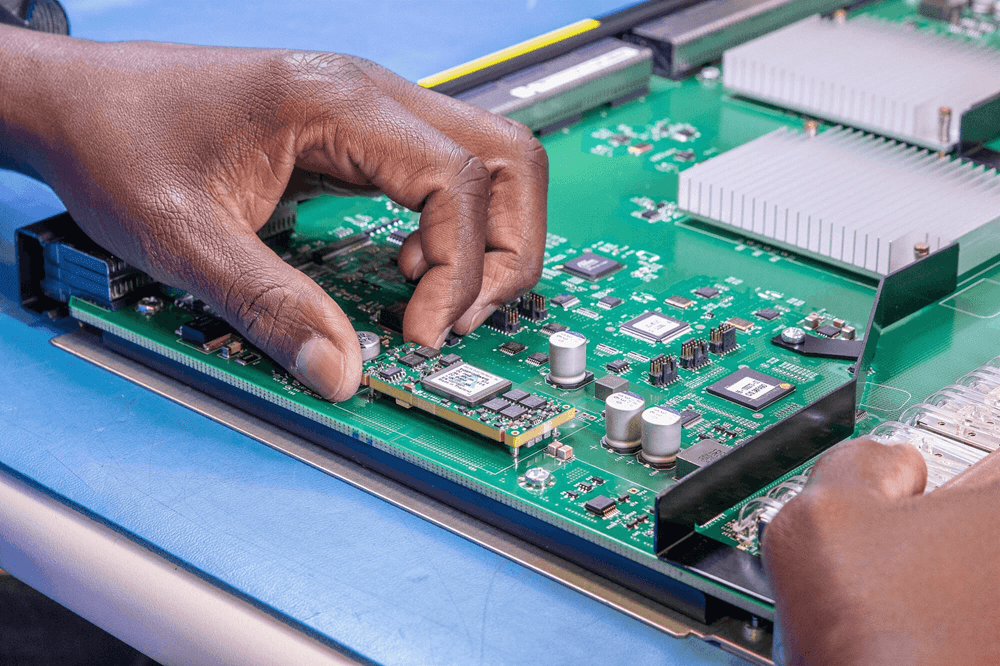Two words almost every tech industry business leader knows well are “change” and “challenge.” What works today is likely to be changed, replaced, reorganized or upgraded to something different tomorrow — and business leaders, technologists and everyone who works with them are challenged to adapt quickly. Despite this constant industry change, customers still expect a consistent experience from the moment they begin to consider a purchase throughout every stage in a product’s lifecycle — and product failure doesn’t pair well with customer satisfaction. Comprehensive, global logistics can go a long way in creating an ongoing positive customer experience, starting with an efficient, reliable depot repair services process and a well-thought-out failure analysis strategy.
Today, original equipment manufacturers (OEMs) face a number of specific challenges that affect their global logistics strategies. Increased import-export tariffs and global regulations over the past few years have driven companies to consider regionalized programs instead of single repair nodes in one global location. Mergers and acquisitions mean companies are not only reorganizing staff but also rethinking their processes and supply chain logistics.
During these times of change, businesses may be challenged to maintain prompt response times, which is a vital part of an efficient repair service strategy and critical to customer satisfaction. Without sufficient data and analysis, companies may struggle to overcome — or even understand — product failures, which can lead to disappointed customers experiencing repeat issues.
3 Best Practices for Your Global Logistics and Repair Services Strategy
To stay ahead of the curve and keep customers unaffected, the following considerations are essential when building an efficient repair, failure analysis and global logistics strategy — ultimately generating a more positive and consistent customer experience.
-
Don’t Underestimate the Actual Impact on Your Customers
While customers are generally not happy when something breaks, if they have a good experience throughout the repair process, it will reflect positively on your overall brand. Global logistics boils down to having the right part in the right place at the right time for the right cost. Maintaining a level of control over your depot repair services helps these elements line up perfectly, ensuring reliable quality and an ongoing great customer experience.
According to a report on the omnichannel customer service gap, 87 percent of customers think brands need to put more effort into providing a consistent experience. If your company is undergoing large-scale change (such as a merger) or you are enmeshed in sorting out new supply chain logistics, consistency can become challenging. One or more of your global logistics nice-to-haves may fall to the wayside, and as a result, you may soon find yourself dealing with unhappy customers. For example, if you’re shipping products across international borders for repair, you’ll likely need more time built into your standard service level agreements (SLAs), meaning customers will be without their equipment for longer. In addition, changing customs regulations may cause delays in delivery of parts, or new tariffs could drive up costs, which may find their way to end customers.
No matter how well-built a product is, some types of technology failure are inevitable. Large companies often have thousands of repairs a year; it’s just a reality of doing business. But every customer touch point must be identical, because one bad experience out of 20 good ones is the one that will be most remembered. It comes down to having an effective repair services operation that delivers that consistent, seamless experience and gets your products back into your customers’ hands more quickly.
Regionalized depot repair services can help with these issues, as products and parts spend less time in transit, resulting in prompt repairs at lower costs. With centralized depot repair services, OEMs need to hold more inventory overall to account for challenges in parts acquisition.
Effective communication along the way and meeting SLAs are key to a positive customer experience. When developing a global logistics strategy, consider your end customers and work to future-proof your repair services and solutions with them in mind.
-
Embrace Different Approaches and Technical Mindsets
An evolving industry can actually support an efficient repair services strategy by bringing in new perspectives and processes as well as people and partners. During mergers and acquisitions, companies can combine best practices, valuable insights and diverse expertise to build stronger repair and failure analysis services.
Prior to restructuring or making any significant staffing changes, one beneficial way to navigate the merger or acquisition is to bring in an experienced, global repair services partner who can help devise a new global logistics strategy that efficiently incorporates expertise and processes from both organizations.
By working with a partner to evaluate your global logistics processes, and as you restructure other aspects of the business, you may find that it makes sense to outsource your global logistics operation altogether. Having a partner who can offer more focused services around repair and provide specific design or manufacturing expertise can help build customer confidence. Outsourcing this aspect of your business to a global partner with a regional presence can lead to greater efficiencies in your overall global logistics initiatives.
-
Optimize Your Failure Analysis
Offering timely, quality depot repair services is just one side of building an efficient repair strategy. The other equally important side is tracking and reporting of product failures. Having dedicated engineering resources to conduct failure or root cause analysis during the repair process can help you understand which products are failing and why.
As mentioned earlier, products and parts fail — that’s just reality. But understanding why can help you avoid costly redesigns and keep customers happy. Is it a core design problem affecting your entire install base? Or is it just a handful of components? Is something going wrong with the specific operating environment or is there product misuse? Is it something that needs to be addressed during manufacturing? Or is it a problem with your product packaging or how it’s being handled during shipping?
Root cause analysis can find answers to each of these questions, determine the problem’s potential growth and uncover solutions to remedy the issue. It’s important to get down to the root cause and look beyond the failed part to understand the full picture around how the product is being designed, manufactured, shipped and employed on the customer side.
Furthermore, having access to this level of failure analysis and root cause information in an easily consumable report allows OEMs to take action as needed within their organization, with supply chain partners or even with customers. The right partner should provide a report with clear data for an agnostic approach — as in, no bias in terms of who may be at fault. This analysis can drive product design improvements and prevent similar failures in the future.
Transparency like this is another great way to drive customer satisfaction. When customers see that you are continually working to improve your products and avoid future failures, their trust in your business only grows.
Enhance Your Customer Experience With a Global Logistics and Repair Services Partner
These three best practices are key to a successful global logistics strategy and efficient repair services process. Combined — thinking of your customers’ perspective as you navigate industry change, employing the expertise of your entire team, engaging with a global logistics and repair services partner and examining your product failures using an optimized system — they result in a future-forward repair strategy that will keep your customers satisfied, even when something inevitably goes wrong.
Shyft Global Services provides the support you need in implementing all three factors of an efficient repair and failure analysis strategy that keeps your customers front of mind. With deep, global expertise in a range of technologies, product design strategies and manufacturers, Shyft takes a holistic approach to root cause analysis and extends your global footprint to provide prompt repair solutions and individualized customer service.
Using best-in-class quality management systems in strategically located, state-of-the-art facilities, Shyft’s expert engineers and trained technicians ensure that your product operates optimally and that your customers get to experience the full value of using your equipment. In addition, Shyft’s services encompass the entire product lifecycle — both before and after repair — enabling further service efficiencies in your global logistics operation.
It’s time to future-proof your repair service strategy, free up your resources and focus on the road ahead — all while maintaining a positive and consistent customer experience. Shyft Global Services is here to help.
About the Author
 Steve Bair has been with the company since 1997 and currently serves as the Director of Solution Architecture for the Global Program Management Office (GPMO) for Shyft Global Services. As part of the GPMO, Steve leads a team of Solution Architects who are focused on the development of product lifecycle solutions for complex, global engagements. His previous experience includes leadership in a variety of product management, engineering and new program introduction roles.
Steve Bair has been with the company since 1997 and currently serves as the Director of Solution Architecture for the Global Program Management Office (GPMO) for Shyft Global Services. As part of the GPMO, Steve leads a team of Solution Architects who are focused on the development of product lifecycle solutions for complex, global engagements. His previous experience includes leadership in a variety of product management, engineering and new program introduction roles.





